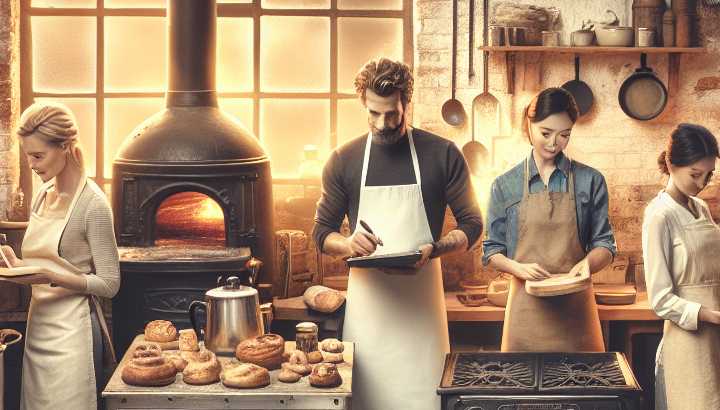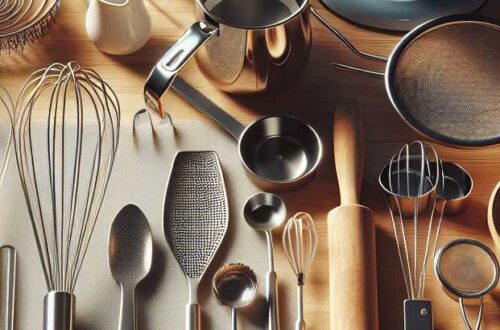Baking Time and Oven Types

1. Understanding Different Oven Types for Baking
Title: Oven-Tertainment: A Rollicking Rollercoaster Ride through the World of Oven Types for Baking
Once upon a time, when you decided you needed to shake, bake, and make something delicious, you did not have to consider what kind of oven to use. Ah, simpler times! Don’t you just bake it, they used to ask? Well, kind reader, things have changed. Today, we’re diving into the exciting, heart-thumping world of oven types. Buckle up—it’s going to be a toasty ride!
First up in our oven Olympics, you find the traditional, the classic, the godfather of ovens: the Conventional oven. This humble champion dates back to when dinosaurs prowled the earth. Ok, maybe not that old, but they’ve been around for generations. Conventional ovens work by heating air from the bottom, which then swoops up like a waltzing couple to bake your food. While it’s not always evenly heated, conventional ovens remain a knight in shining armor for casseroles and meats that crave that radiant heat. So, when you pull out Grandma’s recipé book for a heartwarming dish, the conventional oven stands with open doors.
Next in line: Convection ovens. They’re like conventional ovens, but they’ve been to grad school and gotten a degree in ‘Advanced Heat Distribution—The Musical.’ Convection ovens have this cool built-in fan and exhaust system, which whirls the heat around like it’s in a mosh pit at a rock concert, creating a consistently heated environment. These ovens say, My dear cookies, you’ll all be baked evenly! These are the ovens that baking perfectionists dream of in their chocolate chip cookie dreams.
Third on our exhilarating oven bonanza are Toaster ovens—cute little elves of the kitchen. These are perfect for not-so-spacious kitchens or for those days when you don’t want to feel like a baker in a large-scale bakery while you’re just trying to toast your sandwich.
“Some states do not allow disclaimers of certain implied warranties or the exclusion or limitation of certain types of damages”
~ James Grant, Legends of the Black Watch
Toaster ovens heat quickly (score!), are energy efficient (double score!), and are easy to clean (do I hear a hat trick?). They’re surprisingly versatile for their size, not quite an oven but more than a toaster, like a penguin with the heart of a lion.
If you’re passionate about precision, then Steam ovens might be your perfect partner for baking. They sound like something a steamboat would have, but honestly, they’re far more cutting-edge. Steam ovens introduce the wonder of humidity into baking, turning that hard-to-get, crispy-on-the-outside, soft-on-the-inside balance into an everyday affair. Bread bakers and enthusiasts of tender, moist cakes will appreciate the credit steam ovens deserve.
Finally, we peek into the future with the Microwave ovens – the Speedy Gonzales of the oven world. While they’re more accustomed to reheating yesterday’s leftovers, they too can have a turn on the baking dance floor. While their heat distribution is similar to a toddler’s attempt at sharing candy (utterly unpredictable), microwave ovens are ideal for quick fixes or occasional baking ventures. Not everyone’s first choice for serious baking, but hey, we don’t all have time to knead dough for six hours.
There we go, fellow baking enthusiasts! We’ve charged through the land of oven types, from the traditional tunesters to the modern-day maestros. Remember, it’s not just about baking; it’s about the journey, the thrill, the sheer oven-tastic adventure! So, the next time you decide to bake, take a moment to appreciate the oven’s role — the unsung hero that brings your creations to scrumptious life. Happy Baking!
Enjoyed This? Here’s More: 1. Understanding Different Oven Types For Baking

2. Factors Affecting Baking Time
Title: ‘The Great Bake-Off: Factors Affecting Baking Time’
Popping a tray of deliciously wholesome goodies into the oven can feel like the thrilling culmination of an epic baking saga. A saga that’s filled with precarious flour battles, butter skirmishes, and thrilling egg-cracks, all with the hope of crafting a Gordon Ramsay-worthy dish. However, the story’s climax arrives with that eager-anticipation-filled countdown – the baking time.
Just as a music conductor sets the tempo for a symphony, mastering baking time is a must for any culinary maestro aiming to create mouthwatering masterpieces. Baking time shouldn’t be compared to waiting for a sloth to cross the road slow. Instead, it’s all about precision, dear reader. Any variation can turn your fluffy dream into a charcoal nightmare faster than you can say soggy bottom.
Factor 1: Your Oven, The Fierce Dragon
Did you know your oven has more mood swings than a teenager? Some parts might heat up faster than a summer in Sahara desert while others stay as frosty as a winter in Siberia. Oven yawn (when you open its door) also affects the temperature, acting like an arctic blast sweeping your sweet treats. So ensure to preheat your oven, banishing those cool spots, and making it about as consistent as a British weather forecast. Also, learn where the hot & cool spots lie! Your bakes will thank you for it.
Factor 2: The Fantabulous Art of Portioning
Your cake shouldn’t swallow your oven like a monstrous baked Godzilla, nor should it get lost like a lonely muffin adrift in a celestial baking universe. Proportions matter, folks! An overly dense cookie dough ball might take more time to crack its shell, while an undersized brownie might burn faster than a vampire at sunrise.
“Swords and lances did their terrible work, and in the briefest time hundreds of our enemies had fallen”
~ Unknown, Unknown
Harmony between your dough and baking dish can be the difference between glorious victory and dismal defeat.
Factor 3: That Pesky Thing Called Altitude
Here comes our spoiler! Altitude, yes, the villain. The higher you are from sea level, the lower the air pressure, which means your goodies might rise faster and dry out quicker. It’s like baking on top of Everest while balancing with a panda on one foot. You need to add more liquid, reduce baking powder, and increase oven temperature to counter this devilish enemy.
Factor 4: The Humidity Disaster
Humidity – the plot twist! Just as gremlins love water, humidity affects your bakes too. In a humid climate, baked goods absorb more water and vice versa in a dry climate. Meaning, your cake can turn from Cinderella-at-the-ball to Cinderella-in-Rags, real quick. Keep an eye on weather reports and adjust your recipe accordingly.
Ladies, gentlemen, and budding bakers; before you don your apron and morph into your superhero chef persona, remember the undeniable power of baking time. It’s not just a countdown; it’s an art, a science, and a sprinkle of magic all baked into one. As with any fairy-tale, a happy ending is about the journey and understanding these cunning factors dictating your quest for the perfect bake. So suit up, mix with caution and bake with precision, and remember – the oven timer is your greatest ally. Happy baking, brave knights of the kitchen!
Learn More: 2. Factors Affecting Baking Time

3. Adjusting Baking Time for Different Ovens
Title: The Great Baking Adjustment: Time-Warping in Your Oven
So, you’ve got a brand new oven. It’s shiny, it’s beautiful and it’s screaming to be used. You’re all set to bust out your grandmother’s legendary chocolate chip cookies recipe, but there’s only one problem: Grandma used an ancient oven that was powered, perhaps, by dinosaur tears. You’ve got a state-of-the-art, nice-smelling appliance straight out of The Jetsons. Now, the question is – how can you adjust the baking time from dinosaur-tear appliance to a Jetson-like oven? Hold onto your apron strings because you’re about to enter the thrilling realm of oven time-warping!
1. Know Your Oven
Each oven is like a snowflake. Not only because it’s unique, but also because it can give you the chills trying to figure out how it works. Some ovens run hot, others run cool, while few have been known to do the samba on the kitchen counter while singing old bread baking songs (unverified, but entertaining if true).
The oven’s temperature can fluctuate. While the oven may read 350 degrees, in reality, it could be a roasting 375 or a chilly 325. You never truly know until you bring in a third party, also known as the oven thermometer, to sort out the drama and tell you the truth. So, invest in one
2. The Art of Adjustment
Once you’ve figured out if your oven is running a temperature (or a dance marathon), it’s time to make some adjustments. If it runs hot, you can lower the temperature by about 25 degrees. If it runs cool, crank that dial up a notch or two.
“It began to dawn on us that people engaged in getting their living in the ordinary walks of life couldn’t be expected to keep the telephone at their ear all the time waiting for a call, especially as it weighed about ten pounds then and was as big as a small packing case, so it devolved on me to get up some sort of a call signal”
~
Thomas A. Watson, The Birth and Babyhood of the Telephone
Remember, you’re not taming a dragon; subtlety is key!
Adjusting the time becomes the next Herculean task. If your oven runs hotter, your food will cook faster, so reduce the baking time by 10-15%. If your oven is cooler, extend it. Timing is everything in comedy and baking. And who knew they’d have so much in common?
3. It’s a Trial (and Error) Process
Moving on to the exciting world of trial and error. Your first few attempts may emerge from the oven similar to charcoal briquettes, but don’t despair- every burned cookie leads you closer to perfection. Just remember to adjust in small increments. And keep your local fire department’s number handy… you know, just in case.
Finally, don’t rely solely on the time stated in the recipe. Make a habit of checking your baked masterpiece much earlier than the recipe tells you to. Better safe than sorry – nobody wants a cake that’s tougher than a mailman’s leather satchel.
There you have it! Much like a skilled baker kneads dough, you too can adjust and adapt your baking times across the vast multiverse of ovens. So, dust off that apron, harness the power of raw dinosaur-tear energy (or electricity), and make Grandma proud! May your oven always be at the right temperature and your cookies never burn! Good luck advancing to the status of Oven Time Lord!





